#new zealand brand identity
Explore tagged Tumblr posts
Text
Is Poor Branding Hurting Your Sales? Unlock the Power of Brand Identity Systems and Training
What Are Brand Identity Systems, and Why Do Businesses Struggle Without Them?
Brand identity systems are the foundation of a company’s visual and verbal communication. They define how your brand looks, sounds, and feels, creating a consistent and memorable experience for customers. Without a strong system, businesses often face challenges like:
Inconsistent Messaging: Your brand message varies across platforms, confusing your audience.
Lack of Recognition: Customers fail to identify your brand amidst competitors.
Missed Opportunities: Poor branding results in a disconnect with potential buyers.
A well-defined brand identity system ensures your business stays recognizable and resonates with your target audience. For expert insights into crafting an impactful brand identity, check out Agrarian’s services.
Why Do Sales Teams Struggle Without Proper Training Services?
Many businesses invest heavily in branding but overlook the importance of empowering their sales teams. Common pain points include:
Ineffective Communication: Sales reps struggle to convey the brand’s value proposition.
Low Conversion Rates: A lack of training results in missed opportunities and poor customer engagement.
Employee Burnout: Without proper guidance, sales teams face unnecessary stress and inefficiency.
Sales training services equip teams with the skills and strategies needed to thrive. Whether it's building rapport or leveraging CRM tools, professional training bridges the gap between brand identity and successful sales execution. Learn more about how this works at Agrarian’s Sales Training Services.
How Do Brand Identity Systems Influence Sales Success?
Brand identity and sales performance are interconnected. A cohesive brand identity:
Builds Trust: Customers are more likely to engage with brands they recognize and trust.
Enhances Customer Experience: Consistent branding creates a seamless journey from awareness to purchase.
Motivates Sales Teams: A strong brand identity gives salespeople confidence in what they’re selling.
Sales reps who believe in their brand can articulate its value more effectively. This alignment boosts conversion rates and fosters long-term customer relationships.
What Role Does Sales Training Play in Reinforcing Brand Identity?
Even the strongest brand identity can falter if sales teams fail to represent it accurately. Sales training services ensure that teams:
Understand Brand Messaging: Training aligns sales tactics with the brand’s voice and mission.
Personalize the Sales Approach: Teams learn to adapt the brand’s identity to individual customer needs.
Overcome Objections: Sales reps are trained to handle customer concerns while staying true to the brand’s values.
For example, a rural sales team trained through tailored programs can better connect with local communities while embodying the brand’s identity. Discover more about rural sales-specific training at Agrarian’s rural sales services.
What Are the Common Pain Points in Combining Brand Identity with Sales Efforts?
Misaligned Goals: Branding teams focus on aesthetics, while sales teams prioritize numbers, creating a disconnect.
Lack of Training: Sales teams may not fully understand or leverage the brand identity in their approach.
Inefficient Tools: Outdated CRM systems and uncoordinated workflows hinder seamless execution.
By addressing these challenges through integrated brand identity systems and sales training services, businesses can drive growth and improve customer satisfaction.
How Can Businesses Solve These Pain Points?
Invest in a Comprehensive Brand Identity System: Partner with experts to create guidelines that cover every aspect of your brand.
Provide Continuous Sales Training: Equip teams with skills to align their strategies with your brand identity.
Leverage CRM Tools: Use modern tools to track performance and ensure consistency in sales processes.
Agrarian offers tailored solutions to help businesses align branding and sales. Visit their website to explore customized strategies.
FAQs
1. How do brand identity systems benefit rural sales teams?
Brand identity systems give rural sales teams a clear framework to represent the brand, ensuring consistency and relatability in local markets.
2. Can sales training services improve team morale?
Yes, well-designed training programs build confidence, reduce stress, and improve team performance, leading to higher morale and job satisfaction.
3. Why is it hard to maintain brand consistency in sales?
Miscommunication and a lack of training often lead to inconsistent brand representation. Aligning branding efforts with sales through training solves this issue.
4. How do I get started with integrating these systems?
Reach out to experts like Agrarian for tailored solutions in brand identity and sales training services.
#brand identity systems#brand identity nz#new zealand brand identity#rural sales training Australia#sales coaching New zealand#Rural sales programmes
1 note
·
View note
Text
Debunking: Plurality in Transgender Mental Health (2018)
Cross-posting this solid debunking of an oft-cited section about plurality. Most of the images speak for themselves, but I'll add in occasionally to explain further.

The first section defines being plural as "Having two or more people existing in one body or space" (Yarbrough, 2018). The highlighted sections on plurality have no source - these are unsubstantiated claims that contradict the scientific general consensus and research on how systems form, leaving the reader unable to determine whether the information came from a legitimate/reputable source or not. As it is now, the fact that the sections about plurality have no source seems to imply that the author couldn't find a legitimate source with their definition of plurality, instead fabricating explanations.

The majority of this page describes someone who has been repeatedly traumatized as an example for explaining plurality. In context, this actually makes the argument against their claim stronger - if this is the only case study provided, it implies the only sources the author found to support their claim here are trauma-related - inadvertently strengthening the claim that systems can't form without trauma.


The information about open and closed systems, fronting and blending, and headspaces does have a source, but upon investigation, the original source doesn't have a source; the only information we have about the author is the note that the page was "Written by E of NS," who is not listed anywhere on the site (E of N.S). Where is all this information coming from? Who is E of NS? It is possible that some of what's written is accurate, but the fact that so much of the original source makes claims without citing any sources, and that we know nothing about the author but their initials, this source cannot be called a credible one.


This entire section makes claims about plurality that directly contradicts the body of existing research (see Dorahy et al., 2014 and Dell & O'Neil, 2009, but there are more) with no sources to support what they're saying. I cannot call this reliable or legitimate information if large sections are fictitious.

As shown above, all of these references either pertain to dissociative disorders or are not legitimate sources as is evident in previous sections. Of note to me is that the author's specialties don't include DID, multiplicity, or trauma.
I hope that this breakdown helps explain why the section on plurality in Transgender Mental Health has a lot of illegitimacy and should thus not be cited as a reliable or accurate source.
Sources below the cut:
American Psychiatric Association, DSM-5 Task Force. (2013). Diagnostic and statistical manual of mental disorders: DSM-5™ (5th ed.). American Psychiatric Publishing, Inc.. https://doi.org/10.1176/appi.books.9780890425596
Dell, P. & O'Neil, J. (2009). Dissociation and the Dissociative Disorders: DSM-V and Beyond. Routledge.
Dorahy M. J., Brand, B.L., Şar V., et al. (2014). Dissociative identity disorder: An empirical overview. Australian & New Zealand Journal of Psychiatry, 48(5), 02-417. https://doi.org/10.1177/0004867414527523
E of N.S. (n.d.). What Is Plurality?. Plurality Resource. https://pluralityresource.org/plurality-information/
Herman, J. L. (1992). Trauma and recovery. Basic Books/Hachette Book Group.
Johnson, J. G., Cohen, P., Kasen, S., & Brook, J. S. (2006). Dissociative disorders among adults in the community, impaired functioning, and axis I and II comorbidity. Journal of psychiatric research, 40(2), 131–140. https://doi.org/10.1016/j.jpsychires.2005.03.003
Yarbrough, E. (2018). Transgender Mental Health. American Psychiatric Association Publishing.
#system#syspunk#sysblr#systempunk#dissociative identity disorder#dissociation#DID#DID system#actually DID#endogenic#multiplicity#plurality#pluralpunk#debunk#debunking
7 notes
·
View notes
Text
No. 28 - A Further Explanation of the Star Alliance Test
This is a main-series post, despite not being a review of a specific airline. I just think it's something that belongs in the series, that should be read. Don't worry. Today's airline is going to come later. This is a necessary preamble to get out of the way first, and it's also me making things right with an airline I've covered already.
Stick around and I promise it'll make sense. I had to rewrite this entire post from scratch, so if I could have changed this fact I would have, but fundamentally before I talk about today's true subject I need to talk about the Star Alliance Test (SAT for the remainder of this post).
So let's begin with a question. You don't have to get this right. Just take a brief look at these pictures, don't try to examine them closely or anything, just a look-over, and tell me which one of these planes - we'll call them 1, 2, and 3, left from right - flies for an airline we’ve touched on briefly before, Avianca.

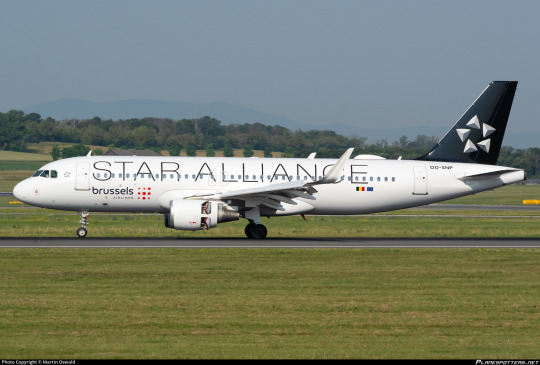

Got your answer locked in? Hit the readmore and let me tell you why I asked you this!

That's right! The answer was No. 1. You can tell because it says Avianca on it, if you look closer. But...why? Why would we want to be put in a situation where 'which of these three airlines with completely different liveries, identities, and brands does this plane fly for' is a question that could feasibly come up?
I don't know. I didn't make that choice and I was probably on some other wall during that meeting. Oh, and to the best of my knowledge I also hadn't been born yet. But it's a thing airline alliances do. And Star Alliance is the subject of the Star Alliance Test - one of my metrics for determining if an airline deserves a grade of F.
The Star Alliance test has been used precisely once - in my SAS post, regarding the 1998-2019 livery (henceforth referred to as red engine SAS or RESAS).

This monstrosity, for those blessed enough to not remember.
Here are the rules of the test.
The Star Alliance Test has exactly one question. Would I prefer that all this airline’s planes were forcibly repainted into Star Alliance liveries instead of allowed to remain in their current state?
If the answer is 'yes', the airline automatically gets a grade of F.
Why Star Alliance? After all, it could be better but I don't think it's that bad. Well, I choose it because the Star Alliance test isn't really about being aesthetically pleasing - at least, not exclusively. Let me explain.

Star Alliance is the largest airline alliance in the world. Flightradar24 estimates there are 106 planes flying in a Star Alliance livery. It has 26 member airlines, shown above. Note the variance in color scheme, in logo, in origin. 26 is so many airlines. These carriers span every continent except Antarctica and basically only share three features: being international, being full-service, and being members of Star Alliance. I think it's safe to say that in any other context, nobody would ever associate THAI and Avianca, or Shenzhen Airlines and TAP Air Portugal, or Aegean Airlines and EVA Air.
Each of these airlines has a livery of their own, except for Copa. I've covered Lufthansa and SAS already. Croatia Airlines and Air New Zealand are on my request list. Another several are on my own private 'short' list. (It is 50 airlines long. You don't want to know how long my longlist is.) 26 airlines comes out to at minimum 26 reviews, but actually more because you saw me squeeze four out of SAS. I will say up front, Star Alliance runs the gamut of liveries. There are a couple I like, a couple I think are very bad, and most I think are middling. But each of them, except Copa, is its own. Some of their designs are minimal, disappointing, ugly, but they are all designs made in an attempt to reflect the airline's identity and distinguish it from the rest of the tarmac, even if they create something ugly or boring or cowardly or all three.
A livery can be very, very bad indeed. But in my own mind an F, an outright failure, is the inverse of an A+ in a sort of cosmically symmetric ontology, and these are not the inverse of an A+ livery. They do not embody a transcendent bad to balance the scales against transcendent good. To reach this point you must be not only ugly but a gnawing void eating away at your own self. A livery worthy of the grade F do not fail to execute a good concept, or even fail to execute a bad concept. They have no concept and they fail to justify their existence.


One of the worst liveries I've covered vs one of the best.
The SAT is a litmus test for this astronomical, pernicious state of utter failure. It takes more to fail the SAT than to just be uglier than the default Star Alliance livery. Plenty of liveries are uglier than Star Alliance's and they pass by light-years. To fail the SAT requires more than bad design, blandness, or anything else of that nature. It is monumentally difficult to fail the SAT. It’s like stalling an Airbus. You can do it. We know this. People have managed to do it, when the perfect storm arises and the world enters that uncanny state where luck and circumstance conspire to make the absurd a reality. But it’s really not something you can do, broadly speaking. Just pulling the nose up too far or forgetting to keep track of your airspeed isn’t going to do the trick. Icing on the wings won’t either. Even forgetting to extend your flaps on takeoff probably won’t be enough. It’s rare enough that it straddles the border of being an urban legend. It seems so easy to do thoughtlessly but it’s only happened a couple of times. Even doing it intentionally is harder than just designing a good livery. I'm not even sure it's possible to do it intentionally.
To fail the SAT, you must fail so comprehensively that you should no longer be allowed to design your own livery. You should, in a paternalistic manner, have your entire fleet forcibly repainted into the Star Alliance colors.
A livery is meant to distinguish and represent an airline. Even a bad design is still a design. The reason that RESAS fails the SAT, in my mind, is that it doesn't feel like a design. It's not coherent. It's not intentional. It doesn't feel like improperly integrated parts, or even multiple liveries stapled together. It feels like it was designed by random number generator. It utterly fails to represent the airline, utterly fails to look good, and utterly fails to even seem like thought was put into it.
To fail the SAT is to get to the point where I genuinely think it is so shameful to paint this on your planes, so inept on every level, that it would be better to just not have a livery. It would be an act of mercy to become indistinguishable from other airlines instead of staying as it is, a thing you could only ever pity and never truly love. Never respect. The most wretched sort of creature. If your shirt is stained too badly, you just can't keep going on like that. People will point and laugh at you, and that's never fun. They'll say 'that guy's shirt is covered in mysterious substances', and you have to just put on a jacket and cover it up until you get home and fumigate it with kerosene. From 1998 to 2019, SAS would have been better off just not having a livery than they were flying that...thing.
It doesn't have to be Star Alliance in particular. Just something which renders the airplane mostly generic. They can keep a little logo on there but they don't get their own design. It could just as easily be, say, forcible repainting into the default manufacturer liveries Airbus and Boeing use for prototype aircraft.


Not the end of the world, right? These are surely not unbearable liveries. I don't think it's any worse giving up your identity to say you're part of Star Alliance than it is to subdue it in favor of the model of plane. If you're SAS pre-2019, this may be a decent option for you. If you're literally anyone else, the mere concept should be philosophically repugnant.
I am actually being kind, though. If I were to be even harsher, I could have easily made this the SmartLynx Test.
I asked you all about SmartLynx. To begin with, not a single person believed they could recall seeing one of their planes, or that they had flown with them. I didn't think they'd be able to. That's not a question I can really answer about myself either, at least not with any confidence. But what is SmartLynx?

The vast majority of responses just expressed bewilderment. I got 50 total replies to the questionnaire itself. Keep in mind that some people declined to answer, and I didn't include them, and even still the number of people who actively expressed that they did not know is nearly half of all responses. Few of the answers were especially confident, either. I'm fairly sure the ones about transporting animals were all jokes, and nearly everyone expressed that their answer was a guess. Someone just said 'bad', which I thought was pretty funny. I liked that answer.
I got two people who said that SmartLynx are airplane lessors. Actually, one said 'private airplane sharing company', but I've interpreted that as meaning lessor. Anyway, they're right. The people who said charter also aren't wrong.

SmartLynx are a Latvian airline which specializes in wet leases. For those unaware, a wet lease (very bad term) in aviation is a lease of an airplane that comes with a crew to operate it. Generally everything else, like fuel and various operating fees, is on the airline leasing the plane, and they're also the ones who market and sell the tickets. Basically, you could get on a flight, your ticket says, for example, Oceanic Airlines Flight 1, you bought it from the Oceanic Airlines website using your Oceanic Airlines miles, and be none the wiser that SmartLynx owns the airplane and pays the pilots flying it. These vary a little, but generally a wet lease provides ACMI (aircraft, crew, maintenance, and insurance), and if you ever see the term 'damp' or 'moist' lease that means the cabin crew is provided by the lessee rather than the lessor, but apparently neither sees much use. Which is a shame, because I think this is one of the few situations where more categories actually might make this easier to parse.
If all of that is sort of confusing and a lot of information upfront, you are not alone in feeling like this! I'm still pretty shaky in my own understanding of it. I'm a history person, not a business person. You can think of it as codesharing but never mentioning that's what you're doing, if that's any easier. It's also similar to regional brands of larger carriers, like Delta Connection flights being flown by Endeavor Air or SkyWest, though these carriers aren't going as far as to lease and are still on the hook for their own operating costs.
Every time I explain this to someone for the first time they think it's pretty deranged, and I don't completely disagree, but it's very normal. There are plenty of reasons airlines might wet lease, generally involving them not having the capacity to fulfill demand. All sorts of airlines provide wet leases, and all sorts of airlines hire them. It can create weird legal loopholes regarding who is allowed to fly in whose airspace, but typically it's just one airline not having enough planes for the holiday peak. They usually last for a few weeks or months, rather than the many years of a 'dry' lease which includes a plane only.
SmartLynx fly basically everything you can think of - passenger, cargo, holiday charter. Some airlines they've leased for are EasyJet, DHL, Finnair, and victim of the blog condor. Because they never operate flights under their own name, there is absolutely no reason for them to have their own livery. Indeed, it makes more sense not to, since it would be easier to leave their planes blank in case they want to repaint them into another airline's livery for a longer-term lease.

If you fail the Star Alliance Test, I think you would be better off painting your entire plane white.

SmartLynx has no identity because their entire point is to assume that of others. They basically do the airline equivalent of paying somebody to take an exam for you. This is a SmartLynx plane with Saudia logos on airasia color-blocking. It's a bit weird-looking, sure, but it betrays nothing about SmartLynx because their entire job is to not have a brand. Nobody has ever seen a SmartLynx plane because they exist literally but not philosophically - the job of a SmartLynx plane is to fly for a different airline. They are the stagehands of aviation, scurrying around in all black to stand out as little as possible.
But SAS isn't SmartLynx. SAS is a big airline, a flag carrier, and to say that they fail the SAT means that I would prefer their planes all be wiped from existence in an apocalyptic flood of liquid paper. I do not think the 1998-2019 SAS livery deserves to exist. I keep repeating myself because I need to stress how profoundly difficult it is to get me to this point. I would rather a livery be clumsy, bare-bones, poorly executed, cowardly, genuinely ugly, absolutely dismal, than it be non-existent. It takes something absolutely tremendous to bring me to the point RESAS has, where there is nothing, no vision, no meaning, no direction, no design, that justifies its existence.
...so what about condor?

condor was the first airline to get a grade of F. The second was the aforementioned red engined SAS livery, now mercifully retired and thus reduced to a footnote in a post about how far SAS has come. The reason I brought up the SAT in SAS's post and didn't in condor's is that condor emphatically passes the SAT.
I began with the assumption that the SAT was a good measure of if a livery deserves an F, and maybe it still is, but it's definitely not all there is to it. condor is different from Copa and RESAS, it just is. And I think the best evidence of this is that, of all the reviews I've posted, condor is the only one where a significant portion of people who reblogged it disagreed with me. I do understand that at the end of the day everything I say is subjective, and I don't mind when people have opposing views on something, but combined with my own thoughts on the livery, and the process of researching and writing my BWIA post, it pushed me to an epiphany about what makes a truly great and truly terrible livery. And, partly out of curiosity and partly to follow this new path of personal evolution, I asked survey-takers what they think of the condor livery. Maybe I should have left it as a free-response question, but I wanted figures, numbers. So here's what I got. (Free responses have been merged into whichever category they match closest for the sake of simplicity.)
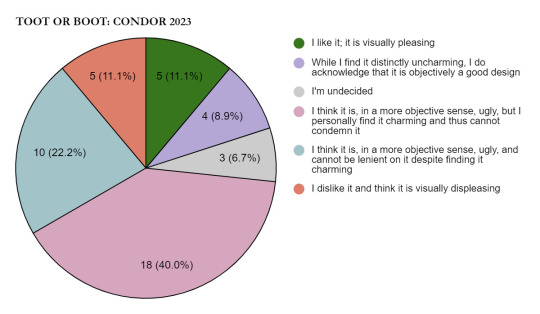
These results are fascinating. First, you may notice that this is missing two options. Not a single person said that this livery was boring, or that they felt neutrally towards it. Even people who are still making up their minds are a dramatic minority.
Second, people who had a clear-cut opinion of the livery, positive or negative, made up just over a fifth of respondents. Most people were at least to some extent conflicted, although which specific variant of conflict varied. There are people who appreciate the idea but do not like the appearance of the livery, and then there are people who find some charm in it. Around 2/3 of these people cannot force themselves to fully insult what they see as a sort of goofy creature, while the other third cannot allow their emotions to sway their rating. If my post on the matter didn't fully convey it, this is probably the closest to my own opinion.
If I was condor, and I saw these results from a focus group (replicated on a scale far larger than my survey, of course) I would probably say to go ahead with this livery. All press is good press, as they say. You're going to end up with a livery that sticks with people, and they're going to respect that even if they think it's hideous. At the very least, they're going to notice you.
Condor's livery is ugly. I will not change my stance; it does not look good. It is unpleasing to my eyes. But it is not the opposite of an A+ livery. In fact, it has a lot in common with them. The reason I love PSA, BWIA, and Amakusa Airlines so much isn't just that they make good use of the plane's shape, have pleasing colors, and generally look nice, but because they are built on the bedrock of a concept which goes beyond designing an airplane. In BWIA's review in particular I discussed the fact that it takes the approach of building a livery around an idea rather than an idea around the concept of what a livery should be; this is what distinguishes an A+ from an A, and the gulf is far larger than the gulf between any two other grades. The difference between 'it's on the better side of okay' and 'I somewhat tepidly like it' can be rather small compared to the difference between 'it's very good' and 'it's genius'.

In the 2022 film "Nope", protagonist OJ asks if there is such a thing as a 'bad miracle'. To me, condor is something similar: bad genius. condor takes a once-in-a-decade great concept and executes it incomprehensibly poorly, and now they're the infamous ugly stripe planes. It has failed spectacularly but it has failed in perfect harmony with itself. It is unlikely that someone attempting to make an ugly livery as a joke or a parody could come up with something quite this sad. I've struggled for a little bit to think of a way to convey what it means to me, and I think I might have finally found it.

The town of Borja, Spain has a population of under 5,000. Although it was largely unremarkable as far as this sort of work goes, they were quite fond of a fresco painted on their church wall around 1930 by the artist Elías García Martínez. All art begins to deteriorate over time, and frescoes are notoriously difficult to conserve. In 2012, an octogenarian with no relevant training had a vision of a gorgeous restored painting. She definitely should have thought before acting. Just because you see something in your mind's eye doesn't mean you can make it real. And if you rush into it you might make...well, you see the picture on the right.
This picture is hideous. And it has brought in crowds of tourists hundreds of times the size of the town's actual population. Their money has funded pensions and built infrastructure. It has become a cultural icon. Nearly everyone with an internet connection has seen it. It's by far the most memorable thing about this tiny town. It is a work of bad genius.
Say what you will about condor's planes - and I myself have said many mean things about them. They are ugly and they are iconic. They are condor's grand statement, and no matter how ugly I think they are the world would be losing something if they were assimilated into identical Star Alliance liveries.
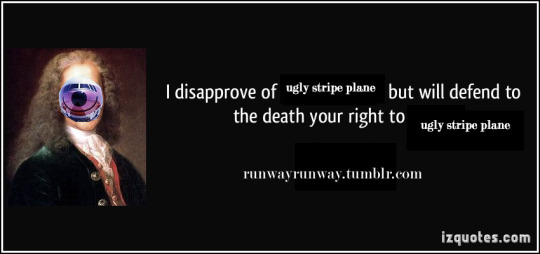
This striped livery is terrible, and it is great. It is worse than many liveries are good. And it does not fail as a livery. It is fundamentally condor's, and there is nothing like it. Distinctive, coherent, unique...and also ugly.
I've realized that condor belongs as a fundamental landmark in my understanding of liveries, just like Lufthansa or BWIA or PSA. Now that I've said all of what I've said in this post, I think giving condor an F just doesn't work. It doesn't belong in the same category as liveries which fail the Star Alliance Test. It doesn't deserve a better grade though. Something so bombastically, almost elegantly hideous requires a rethinking of the scale I've been using.
condor gets Runway Runway's first ever Z rating.
It does a tremendously poor job at being good, but a fantastic job of being a livery. In order for the Star Alliance Test to retain its meaning and the F tier to retain its coherence, condor needs to be reclassified. It is awful, hideous, sloppy, a waste of potential, but it is potential, and 'awful' originally referred to something which inspired awe.
36 notes
·
View notes
Text
Grace Era

When it had first been discussed about taking a break, Grace had been completely all for it. The period from 2017 to 2021, felt to Grace, as one of the busiest periods. Even if they were resting, they were still working and not much actual time off had taken place, at least not for her. The month break before filming Bon Voyage: New Zealand had been filled with more work than she realised so this actual break had been a blessing.
But then came the talks of military service, solo projects taking precedence over group projects and then living apart. They had all bought their own places a while back, using the dorm for work which meant they were still living together more than they were apart. The pandemic saw them quarantine together before they were allowed to separate, but even then they were still together.
Grace, who had finally felt comfortable in her identity as the only female member of BTS and being the only female at Big Hit, suddenly felt lost. Without the boys, who was she? Without BTS by her side, who could she claim to be?
So she went into seclusion at her own apartment, appearing for schedules and work then going straight back home.
The military service was something they all had to do, apart from Grace, and they had all been prepped for it. Seokjin had even wanted to go before Butter came along, but then the pandemic hit and before their Busan concert, he wanted to go but they told him to prolong it for ARMY and then go after the concert. Grace had felt guilty as she knew how much Jin wanted to go and just get it done so he could come back, all the boys had felt like that.
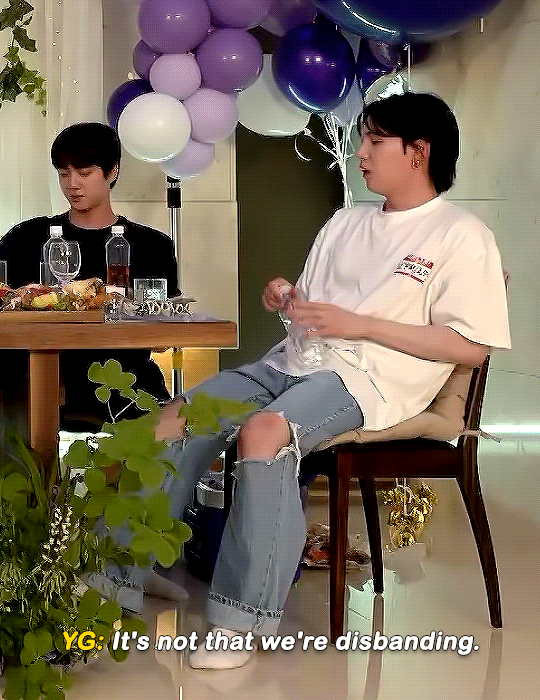
But they also had felt excited about finally doing their own solo things. Grace didn’t.
Bang called her into the office one day, alone and sat her down to have a good talk. To ask her how she was, what was going on in her head and how she was feeling about everything. And finally, she could be honest: she was going to be alone, she was going to be the only member of BTS left and when the boys came back, would they even want to be part of BTS again?
A fear of being alone, to be the only one standing on stage and proclaiming to be part of one of the biggest groups on earth. It scared her.
So Bang put together a team: Sejin was recalled back to be her personal manager, she got her own make up team and stylist, then a team of bodyguards. Big HIt was going to start treating her like the female soloist that she could have been from the beginning.
All of them began to plan Grace’s future career around the boy's solo career, allowing her to attend their schedules undercover while also working on her own. A massive contract with Alexander McQueen was signed with her to be the face of their fashion show in London, another contract was signed with Hyundai for Grace specifically and she signed another contract with Samsung.
Another contract was signed with Louboutin for their famous red bottom heels, allowing her to be the new face of the company but they also signed up to do her heels for future performances.
She managed to secure a deal with Balmain, meeting the creative director Olivier Rousteing in Paris, for designing future performance costumes alongside Big Hits styling team.
Brands and companies were vying for Grace’s attention but she only selected a few, not wanting to interfere with other idols who had previously worked with certain brands or had current contracts with them. She felt like no one should overshadow the other and no fandom should play off the other.
With all boys signed up for the military, Grace was now clear to announce her own projects. BTS's twitter page was updated with black images, no details, other than the words: Here She Comes. A week later, a schedule was updated with the dates but nothing to suggest what those dates meant. Everything and everyone was tight-lipped, no one knew any ideas.
Finally, the big reveal came on Grace’s birthday when she went on V-LIVE to announce a new album was coming as well as a tour, having taken a leaf from Yoongi’s book. Ticket dates and the schedule would be announced soon but a music video would be coming in two weeks.
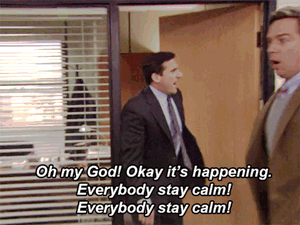
Once the announcement was made, Big Hit changed their social media layouts to feature Grace. ARMY began their own countdowns, even celebrities were going on their own social media to show off their excitement. Teasers were posted through the coming days, and finally, on the big day, the video music of 7 Rings was posted. The video exploded over the internet, the reference to BTS in the video wasn’t missed and the seven dancers were also a key point. YouTubers reacted to the video with glowing reviews and by the time they had released their reaction videos, BigHit posted the tour dates and locations.
She would start in Seoul, then onto Los Angeles, Chicago, and New York then into Paris, two nights in London, and two nights in Manchester. She would then go on to do a few more dates in Europe before flying out to Asia, starting in China, the Philippines, then Japan then back to Seoul for the two final dates.
The tour sold out within minutes, with one more date added to Los Angeles and New York as well as Japan. Then the news came that there would be a BTS tribute concert, for a live audience and live streaming with the boys being able to watch in their military barracks. It happened to land smack in the middle of Grace’s tour, with BigHit refusing to say whether she would be in attendance or even performing though the likes of TXT, Seventeen, GOT7, and Stray Kids had already confirmed they were performing.
When the night came and the concert opened to TXT performing a medley of BTS’ older hits, the opening chords to FIRE played and Grace rose from the middle of the stage. Not only did she perform FIRE, she did DOPE, BAEPSAE, BLACK SWAN, FAKE LOVE, BLOOD, SWEAT & TEARS then ended the night with DIONYSUS, MIC DROP & IDOL. Her performance was the highlight of the evening and reviews came flooding in about how she managed to do eight parts perfectly, including rapping, and dance everyone’s parts with seven male dancers and still put on a performance.

It became clear to everyone that whether she was performing solo or a BTS track, there would always be seven male or female dancers (sometimes both) and there would always be a hint of purple somewhere to signify her connection to ARMY. Grace had once again proved, despite her worries, that she was BTS through and through.
Her tour would conclude with the date of BTS' anniversary when all the boys would be finally released from their military enlistment and BTS would be complete again.
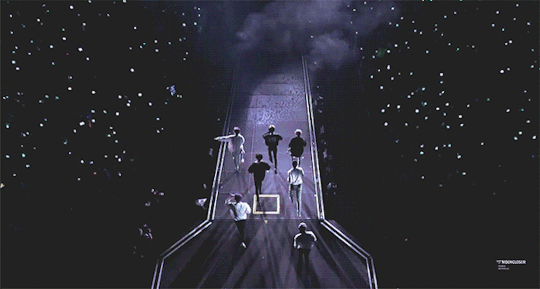
#bts 8th member#bts scenarios#bts fanfiction#bts additional member#bts headcanons#bts reactions#bts fic#bts eighth member#bts female member#bts fanfic
44 notes
·
View notes
Text
Taylor Swift: Australia to host academic conference on pop icon

Taylor Swift onstage during the Eras Tour
Australia is set to hold a world-first international academic symposium on the impact of Taylor Swift.
The "Swiftposium" will explore the megastar's influence on everything from the music industry to culture and the economy.
Organisers of the three-day event hope it will draw researchers from across the Asia-Pacific region.
It will be held in February - the same week Swift brings her record-breaking Eras Tour to Australia.
Swift - who shot to stardom as a teenager - has found herself at the centre of huge cultural moments and debates throughout her career.
The 33-year-old has become one of the highest-earning and most-decorated artists of all time, all while igniting conversations about everything from streaming royalties and music ownership to misogyny and cancel culture.
Such is the effect of Swift's current Eras Tour that she has crashed ticketing sites, experts have coined a new "Swiftonomics" trend, and places like Victoria in Australia have rushed through scalping law reform.
"She's quite a phenomenon," Swiftposium organiser Jennifer Beckett from the University of Melbourne told the BBC.
And so, while the idea for the event started with a half-serious tweet earlier this year, it quickly won the backing of seven universities across Australia and New Zealand.
"Taylor Swift really does have a very concrete impact globally, across things that affect all of us," Dr Beckett said, pointing to things like the role of women in industry, entertainment law, and even GDP.
"World leaders are begging for her to bring the Eras Tour to their country because of the economic benefits that it brings," she added.
While Swift has been the subject of university courses in the US, this is the first time a global symposium is being held to discuss her influence.
Organisers hope the conference will explore themes like the fandom phenomenon, Swift's team's "marketing masterclass", and the singer-songwriter's impact on discussions of gender, identity, race, and intersectionality. Critical analysis of her brand and influence is also welcome, they say.
The speakers will be finalised over the coming months, and plans for a ticketed event for fans to take part in is in the works.
But they have saved a Blank Space in the line-up for the superstar herself, if she wants to drop in.
"If Taylor Swift wants to come… I think all of us would have to spend some time picking our jaws up from the ground, but that invitation is definitely there," Dr Beckett said.
"TayTay if you want to come, we'd love to have you."
2 notes
·
View notes
Text
Everything You Need to Know About Finding a Freelance Copywriter NZ

A freelance copywriter is a person who writes copy for other people. In this article, we will discuss the benefits of hiring a freelance copywriter in New Zealand.
Tips for Working with Freelance Copywriters
Utilizing freelance copywriters can be an excellent way to gain quality content for your business. However, this process can also prove stressful if you are not knowledgeable in what you're doing. To optimize your experience and ensure optimal results don't go overlooked - here are some essential tips to keep in mind! Firstly, determine the type of writer that meets your requirements; do you require a seasoned professional with a proven track record? Or would it be beneficial to hire an inexperienced novice who is willing on learning as they develop their craft alongside yours? Knowing these answers will help guide any search for the most suitable freelancer and guarantee the successful completion of any project. Then establish an allotted budget and timeline so that workers know exactly how much money has been allocated towards this venture - after all it's imperative that professionals provide accurate estimates related to remunerations along with realistic timeframes! Lastly, provide clear instructions about expectations; clearly defining parameters of expectations allows workers to understand the scope of work thus allowing them to deliverables accordingly without becoming overwhelmed by complexity- providing clarity from start will aid in the success
Freelance Copywriter Is Affordable And Flexible
Are you searching for a cost-effective and accommodating Freelance Copywriter in NZ? Don't hesitate - to seek out my services! As a freelancer, I offer high-quality copywriting services that can meet your needs. At any point in time, if there's anything that requires assistance from me - be it something special or routine - I'm here to provide you with an engaging and interesting piece of content. My goal is to craft unique pieces of paper which effectively communicate the mission/message; this ensures accessibility as well as being informative so that expectations are met. Whether it's just one project or an ongoing commitment, let me assist by providing quality work! If we get along well enough during the discussion regarding your assignment(s), then consider giving me another opportunity to work on them further; after all... why would anyone choose someone they don't enjoy working with?
There Are Many Benefits To Hiring A Freelance Copywriter
Investing in marketing is a worthwhile venture, and when it comes to maximizing your budget's return on investment, hiring a freelance copywriter can be an advantageous option. Multiple types of services are available from these professionals - including website content writing and blog posts as well as press releases. Not only does having access to experienced individuals provide you with quality content rapidly; but also help develop your own distinct voice and tone for brand identity. Additionally, by utilizing this service you have control over deadlines which allows dedicated writers within the field who understand how best to craft engaging material for maximum impact! Furthermore; working with professionals offers cost-effective solutions that don't require additional overhead such as office space or benefits – enabling greater fiscal flexibility along the way! Ultimately; assigning veteran contributors within specific fields means absolute assurance that all final products will be upstanding pieces worthy of recognition & praise!
6 notes
·
View notes
Text
The Bone People (1984), Keri Hulme

LGBTQIA+
Summary: On New Zealand’s South Island, three isolated souls find solace in one another, bonded by their identities as mixed-race, their damaged familial relationships, and the journeys they must undertake to learn how to love. Keri Hulme unveils the deep heart of love, the complexities of abuse, and the poisonous fruits of intergenerational violence in her controversial and monumental work, The Bone People.
Full review: High atop a tower, amidst the choppy seas, there once dwelled a large and menacing creature, unlike anything the locals had seen…
It is a fitting Brothers Grimm-esque description of the tone set by the opening of Keri Hulme’s The Bone People, which quickly shifts from tragedy on the Pacific to the self-imposed peace of Kerewin’s domicile: an eccentric and imposing structure befitting an equally eccentric and imposing woman.
In Te Waipounamu, Kerewin has carved out a life for herself that is every introvert’s fantasy. Having won the lottery young and invested the money to win it back tenfold, she lives a labor-free life, spending her days spearfishing, playing the guitar, and drinking without a care in the world.
The home she raises would plague a suburban Home Owners Association: a multi-story tower with dolphin-adorned banisters, toadstools peeking from corners, and an overgrown weed-strewn garden. It is a home created with a sole purpose: Kerewin. It is not a place for visitors or dinner parties, for hosting family or friends or visitors of any nature.
By her own definition, Kerewin is very much the “spinster” single and childfree women of a certain age are branded when they are not involved in monogamous heterosexual relationships by a certain age. Written in 1985, off the bat it is refreshing to read a book wherein the dominant narrative does not revolve around Kerewin’s inherent need to “resolve” this status, and it is clear from the beginning that there is an intentional choice in it.
Kerewin is childfree, not childess, a distinction that is growing but still merits broader discussion. Childfree individuals make an active choice, at some point in their lives, to forgo having children. In doing so they often bear society’s judgement, pressure, and even hostility for going against what many deem to be the “default choice” we should all fulfill with our bodies–to reproduce. Childfree people may choose this decision at a young age or may choose it during their 20s and 30s, after actively giving thought to having their own children and deciding against it. They may love children, dislike them, may fill their lives with the children of their friends, pets, or simply be happy without assuming any type of caregiver role.
Childless people, alternately, can be defined as those who may genuinely want biological children, but be unable to have them. They may experience significant emotional pain over their inability to have children, judgment and stigma directed towards their so-called failings, and may not find adoption, surrogacy, or IVF suitable or financially available options.
Kerewin makes clear her feelings about children early on: she doesn’t like them. Frankly, she doesn’t like much of anyone: that’s why she lives alone, thrives alone, and chooses isolation, which makes it fitting that when a child appears in her window, injured and alone during a whirling storm Kerewin’s immediate reactions of both pity and irritation are so enthralling. She’s immediately drawn to the boy, a sopping wet thing projecting an aura of mystique and the maturity that precedes and child who knows more about the world than they should.
“Mature for their age” is a compliment granted to children and young women alike, who are today learning that it is often an unconscious recognition of the ways abuse leaves its mark. The effects can be mental, showing up as behaviors that appear to make one older than they are, or physical, such as early onset puberty, thinning in the ventromedial prefrontal cortex, and reduced cortical thickness according to the Americal Psychological Association (Colich, Williams, et. al 2020).
As he is unable to speak, Kerewin discovers that she must take time to interpret what the boy, Simon is saying. He in turn discovers that she has patience he is unused to, and from there the two develop a bond that draws them together, transcending his rampant behavioral issues and naturally bringing forth the involvement of his adopted father Joe, who develops an attraction to Kerewin.
The trio becomes close over their shared experiences having multiracial heritages of Pākehā (European) and Māori descent, and as Kerewin comes to care for Simon and Joe she also notes the symptoms of abuse Simon displays, both physical and emotional. As she tries to get to the root of who is responsible, Simon finds in her the first semblance of a mother he has had since Joe’s wife died, while Joe questions the nature of Kerewin’s asexuality.
There are several times throughout the book when the direct question of Kerewin’s sexual orientation comes up. As she is directly based on the author, Keri Hulme herself, there could be no better source of writing on this front regarding representation in asexuality than the simple expression of “it’s who I am.”
Asexuality can be a confusing concept to wrap one's mind around, in part because it does not take a monolithic form, as well as because representation is so lacking for those of us who do not belong to the community. Asexual identities encompass nine labels people may gravitate towards, and the spectrum itself, like any, is prone to fluidity.
Throughout the book, Kerewin is asked whether her asexuality is the result of sexual trauma, whether she is actually a lesbian or bisexual, and consistently whether she and Joe are sexually and romantically involved due to their gradual co-parenting of Simon.
In a brief but poignant speech, Kerewin details that she has never experienced any degree of sexual passion, interest, or feeling. She has attempted to learn about the reason for people’s interest in sex, reading books like the Kama Sutra, and picking apart whether there is something “wrong” with her, only to determine she simply is who she is, a fact Joe must accept.
Despite being pegged as aromantic, Kerewin is a creature capable of love. While our society harps upon the importance of romantic love (to the deficit of all others), it is a testament to her own love for Simon and Joe the increasing feeling of protectiveness she begins to display over Simon, as well as her reaction upon the discovery that Joe is the responsible party for Simon’s physical abuse.
The book has generated significant controversy for Hulme’s relentless depiction of this topic, as well as the portrayal of Kerewin, Joe, and Simon as ultimately three-dimensional characterization on this front.
Simon is a boy who both hates and loves his father, Joe is a man who is both spiteful and pitiable, and Kerewin is both a perpetrator and a savior. It’s complex, and the reaction itself speaks volumes about the way different cultures speak about abuse, view the roles of abusers, and the idea of the psychology of victims, the cycle of abuse, punishments, and so on.
All of this is draped within a mixture of Māori and Pākehā culture, with the book continuously streaming in and out of Māori dialogue, incorporating the atmosphere of Te Waipounamu in each and every meal, blade of grass, and breath the characters take, and bringing forth the mythology of one of the few cultures who have faced colonialism, yet are permitted the stamp of appreciation under the modern gaze due to New Zealand’s appeal to white culture.
You can find The Bone People at your local library, on ThriftBooks, or at Barnes & Noble.
Citations:
https://www.goodreads.com/review/show/5151801806
https://www.theguardian.com/commentisfree/2022/apr/18/childless-childfree-child
https://www.huffpost.com/entry/childless-women-discrimination_n_58b6f352e4b0780bac2f3413
https://www.usatoday.com/story/life/health-wellness/2021/11/29/trauma-forces-some-children-mature-here-their-stories/6358716001/
Natalie Colich, Eileen S. Williams, Maya Rosen and Katie McLaughlin. Biological Aging in Childhood and Adolescence Following Experiences of Threat and Deprivation: A Systematic Review and Meta-Analysis. Psychological Bulletin, 2020 DOI: 10.1037/bul0000270
https://www.asexuals.net/asexual-spectrum/
https://www.thriftbooks.com/w/the-bone-people_keri-hulme/265444/?resultid=3817f3f4-addc-4b5f-a780-c9685dac3d8d#edition=14605880&idiq=46581207
https://www.barnesandnoble.com/w/bone-people-keri-hulme/1100258806
#thevisibilityarchives#tva#lgbtqia#asexual#ace x reader#ace representation#maori#maori mythology#books#diversity#aromanitc#aromaticism#childfree#long reads
5 notes
·
View notes
Text
How Clothing Labels Enhance Customer Loyalty and Trust
When it comes to building a strong brand, every small detail matters, and clothing labels are no exception. In fact, these tiny tags play a significant role in enhancing customer loyalty and trust. Whether you’re running a boutique or a large-scale clothing line in New Zealand, investing in high-quality Clothing Labels NZ can make all the difference in creating a lasting impression.
1. Brand Representation
Clothing labels are a reflection of your brand identity. They serve as a constant reminder of your company’s commitment to quality, style, and attention to detail. A well-designed label communicates professionalism, leaving customers with a positive perception of your brand. With countless options available, such as woven, printed, or heat-transfer labels, businesses in New Zealand can create personalized Clothing Labels NZ that truly resonate with their target audience.
2. Building Trust Through Transparency
Customers today value transparency, especially when it comes to clothing materials and care instructions. Including detailed information on your labels—such as fabric composition, washing instructions, and sustainability certifications—helps build trust. It shows your commitment to providing products that are safe, reliable, and environmentally friendly. This transparency fosters a sense of honesty and accountability, which customers appreciate and reward with loyalty.
3. Enhancing Customer Experience
A thoughtfully designed clothing label not only adds value to your products but also improves the overall customer experience. Labels that are easy to read, soft on the skin, and aesthetically pleasing create a sense of comfort and satisfaction. Custom Clothing Labels NZ can include unique touches like personalized messages or QR codes that direct customers to your website, further enhancing their connection to your brand.
4. Standing Out in the Market
In a competitive market, clothing labels act as a differentiator. They set your brand apart from others by showcasing your attention to detail and dedication to quality. A label with your logo, tagline, or a unique design element helps customers associate your products with reliability and style, ensuring they return for future purchases.
By investing in high-quality Clothing Labels NZ, you can elevate your brand, build trust, and foster long-term customer loyalty. These small yet impactful details can transform your clothing line into a brand that customers not only love but also trust wholeheartedly.
#iron on labels#clothing labels#names labels#iron on labels nz#namestickersnz#clothing labels nz#name tags nz#name labels nz#name stickers nz
0 notes
Text
Enhance Your Space with Commercial Entrance Mats and Carpet Flooring in New Zealand
When it comes to creating a welcoming and professional environment, every detail counts. From the moment someone steps through your doors, the quality and appearance of your flooring make a lasting impression. That’s where commercial entrance mats, matting carpet, and high-quality carpet flooring in NZ come into play.
The Importance of Commercial Entrance Mats
Entrance mats are the first line of defense against dirt, moisture, and debris entering your premises. Designed to handle heavy foot traffic, commercial entrance mats ensure your floors remain clean and safe while reducing maintenance costs. They also improve safety by minimizing the risk of slips and falls, making them a practical addition to any workplace or public building.
Available in various materials such as rubber, coir, and polypropylene, these mats are durable and easy to maintain. Plus, their stylish designs complement your space, adding a touch of professionalism to your entrance.
Matting Carpet for Added Functionality
Matting carpets take the benefits of entrance mats to the next level. These carpets are ideal for lobbies, hallways, and high-traffic areas, combining durability with aesthetic appeal. With their ability to trap dust and moisture, matting carpets enhance cleanliness and protect underlying flooring from wear and tear.
In New Zealand, businesses are increasingly opting for matting carpets as they blend functionality with design, ensuring a cohesive look throughout their commercial spaces.
Carpet Flooring in NZ: A Smart Choice for Modern Workspaces
For offices, retail stores, and hospitality settings, carpet flooring in NZ offers unparalleled benefits. Engineered to handle heavy usage, these carpets provide comfort underfoot while reducing noise and creating a cozy atmosphere.
Carpet flooring is available in a wide range of colors, patterns, and textures, allowing businesses to tailor their interiors to match their brand identity. Many options are also eco-friendly, reflecting New Zealand’s growing commitment to sustainability.
Why Choose Professional Installation?
Whether it’s commercial entrance mats, matting carpet, or carpet flooring, professional installation ensures a seamless and durable finish. Experts can help you select the right products for your space and install them efficiently, maximizing their lifespan and functionality.
Elevate Your Business Today
From protecting your floors with commercial entrance mats to enhancing your interiors with matting carpet and carpet flooring, there’s no better way to elevate your commercial space in New Zealand. Explore high-quality options that combine style, durability, and practicality to create an inviting and professional environment.
Upgrade your flooring solutions today and make a lasting impression on every customer who walks through your doors!
0 notes
Text
Empowering Sensuality: Buying Sex Toys for Women in New Zealand
Exploring one’s sensuality is an essential aspect of self-care, empowerment, and personal well-being. For women in New Zealand, the modern approach to sexual health and pleasure has become more open, inclusive, and celebratory. Purchasing sex toys is no longer a taboo topic but a meaningful way to connect with one’s desires and enhance intimacy, whether individually or with a partner.
Sex toys are designed to bring joy, discovery, and fulfillment, offering a wide range of options tailored to different needs and preferences. For women, these products can enhance experiences, build confidence, and contribute to a deeper understanding of their bodies. From vibrators and wands to more discreet options, there’s something to suit every level of experience and comfort.
In New Zealand, the availability of high-quality Buy Sex Toys for Women in New Zealand has grown significantly, with retailers offering products that prioritize safety, functionality, and design. Shopping for these items is now easier than ever, with a variety of online stores catering specifically to women. These platforms provide a welcoming and private environment where individuals can browse and choose products that align with their personal preferences.
A key factor when purchasing sex toys is quality. For items designed to interact with sensitive areas of the body, safety is paramount. High-quality toys are made from body-safe materials, such as medical-grade silicone or hypoallergenic metals, ensuring a comfortable and worry-free experience. Reputable sellers in New Zealand prioritize customer safety and satisfaction by offering products from trusted brands and adhering to strict manufacturing standards.
One of the most appealing aspects of shopping for sex toys in New Zealand is the emphasis on privacy and discretion. Online stores provide detailed descriptions, customer reviews, and even guides to help buyers make informed decisions. Many retailers also offer discreet packaging and billing, ensuring that customers can explore their options with complete peace of mind.
For women new to sex toys, the variety of choices may feel overwhelming. It’s helpful to start with a basic product, such as a compact vibrator or a gentle massager, to discover what feels most comfortable and enjoyable. For those with more experience, exploring advanced features like app-controlled toys, dual stimulators, or customizable settings can open up exciting new possibilities.
Sex toys are not just about physical pleasure they can also play a significant role in mental and emotional well-being. For many women, these tools offer a way to relax, reduce stress, and cultivate a deeper sense of self-awareness. They can also support sexual health by enhancing blood flow, improving muscle tone, and promoting a positive relationship with one’s body.
For couples, introducing Premium Sex Toys in New Zealand into the relationship can enhance intimacy and communication. Many toys are designed to be used together, encouraging partners to explore each other’s desires and expand their shared experiences. Open conversations about preferences and boundaries can strengthen trust and deepen the emotional connection between partners.
The cultural landscape in New Zealand has shifted significantly in recent years, with growing acceptance and celebration of sexual wellness. This progressive attitude has empowered more women to embrace their desires without shame or hesitation. The rise of women-focused retailers and educational resources has further contributed to this positive change, creating a supportive space for exploration and self-expression.
Inclusivity is another important aspect of the modern sex toy market in New Zealand. Products are available for women of all orientations, lifestyles, and preferences. Whether someone is seeking solo pleasure, exploring their sexual identity, or enhancing a partnership, there are options designed to meet their unique needs.
Educational resources also play a crucial role in helping women make informed decisions about purchasing and using sex toys. Many retailers in New Zealand provide guides, articles, and expert advice to empower customers with the knowledge they need to choose products confidently. Topics such as cleaning and maintenance, choosing the right materials, and using toys safely are often covered, ensuring a positive and fulfilling experience.
Ultimately, buying sex toys is about celebrating individuality and reclaiming pleasure as a vital part of life. For women in New Zealand, this journey is made more accessible by the growing availability of trusted retailers and the normalization of conversations about sexual wellness. Whether you’re taking your first step into the world of sex toys or expanding your collection, the process is an opportunity to connect with yourself and experience joy on your terms.
In the vibrant and progressive culture of New Zealand, the celebration of sensuality has become an empowering part of self-care. Exploring the world of sex toys allows women to embrace their desires, build confidence, and nurture their overall well-being in a way that feels authentic and liberating.
0 notes
Text
Why Are Rural Marketing Strategies Failing Without Strong Brand Identity Systems?
In today’s competitive market, many businesses targeting rural audiences struggle to make a lasting impact. Challenges such as understanding rural consumer behavior, navigating limited infrastructure, and ineffective branding often lead to underwhelming results. In this blog, we’ll explore how a well-thought-out rural marketing strategy and robust brand identity systems can address these pain points and drive success.
What Makes Rural Marketing Strategies So Challenging?
Rural markets are diverse, yet they pose unique challenges that businesses must address:
Limited Connectivity: Poor digital infrastructure in rural areas makes online campaigns less effective.
Cultural Nuances: A one-size-fits-all approach often fails due to varying regional preferences.
Trust Deficits: Rural customers are more likely to rely on word-of-mouth than flashy advertising.
Without a tailored strategy, these obstacles can derail even the most ambitious plans.
How Can a Rural Marketing Strategy Be Tailored for Success?
To succeed in rural markets, businesses must create strategies that address these unique challenges.
Leverage Local Insights: Understand the community's needs and preferences through on-ground surveys or collaborations with local influencers.
Focus on Simplicity: Avoid complex messaging; instead, use relatable visuals and storytelling.
Hybrid Outreach: Combine offline channels like radio, kiosks, and fairs with digital marketing to maximize reach.
Micro-targeting: Break your strategy into smaller, location-based campaigns for better resonance.
By prioritizing these elements, companies can connect with rural audiences more effectively.
Why Is a Brand Identity System Vital for Rural Success?
A brand identity system isn’t just for urban markets—it’s the cornerstone of trust and recognition, especially in rural areas where word-of-mouth holds power. Here's why it matters:
Consistency Across Touchpoints: A cohesive identity ensures your brand is recognized across print, digital, and on-ground platforms.
Building Emotional Connections: Strong branding, rooted in rural culture, can create an emotional bond with consumers.
Standing Out in Crowded Markets: A distinct identity helps your brand shine, even amidst local competitors.
For example, integrating culturally relevant symbols and language in your logo, ads, and packaging can resonate deeply with rural customers.
How Do Rural Marketing and Brand Identity Work Together?
When combined, a robust rural marketing strategy and a strong brand identity system can overcome the biggest pain points, such as:
Brand Recall: A memorable identity ensures your marketing efforts are not forgotten.
Trust Building: Consistent branding fosters trust, especially in markets skeptical of new players.
Scalable Campaigns: A unified identity allows for campaigns that can adapt to various regions without losing authenticity.
For instance, a regional FMCG company increased its sales by pairing locally themed branding with grassroots-level promotions, resulting in higher customer loyalty.
What Are the Key Steps to Building a Strong Brand Identity in Rural Markets?
Creating a compelling brand identity for rural audiences requires a mix of creativity and cultural sensitivity.
Understand the Audience: Research rural consumers' values, preferences, and habits.
Cultural Integration: Incorporate local art, dialects, and traditions into your branding.
Simplify Visuals: Use clear, relatable symbols that are easy to identify and remember.
Be Authentic: Rural audiences value honesty; avoid over-promising or imitating urban trends.
By aligning your branding efforts with these principles, you can create a lasting impression.
What Role Does Digital Play in Modern Rural Marketing Strategies?
While offline methods remain vital, the rise of mobile internet is transforming rural marketing. Here’s how businesses can harness this potential:
Localized Digital Ads: Platforms like Google and Facebook allow for hyper-local targeting based on location.
WhatsApp Marketing: This app has penetrated rural markets and is ideal for personalized communication.
E-commerce Integration: Partnering with local delivery services can expand your reach.
Edutainment: Share engaging, educational content that subtly promotes your brand.
These strategies ensure your brand remains visible in an increasingly digital landscape.
How Does Agrarian Help Businesses Succeed in Rural Markets?
Agrarian specializes in developing rural marketing strategies and brand identity systems tailored for success. By combining deep industry insights with a focus on cultural relevance, they provide solutions that resonate with rural audiences. Learn more about their services at agrarian.co.nz.
Conclusion: Crafting Success in Rural Markets
A winning formula for rural markets lies at the intersection of a customized rural marketing strategy and a cohesive brand identity system. By addressing pain points like lack of trust, inconsistent messaging, and cultural disconnect, businesses can unlock the full potential of rural opportunities.
For those looking to build trust, drive engagement, and achieve lasting success, now is the time to rethink your approach. Explore resources and expert insights to guide your journey at agrarian.co.nz.
#sales training services#brand identity company#marketing assessments#brand identity systems#brand identity nz#new zealand brand identity#rural marketing assessments#rural sales conference speaker#communications audit#rural sales speaker au
0 notes
Text
Elevate Your Business with Custom Designs – Saturation2hue.com
In today’s competitive world, the power of impactful branding is undeniable. At Saturation2hue, we specialize in transforming your vision into high-quality designs that captivate and connect with your audience. From small businesses to large corporations, we are here to provide top-notch design services that give your brand the attention it deserves.
Our diverse range of services includes banners, sign boards, business cards, brochures, event tickets, door hangers, calendars, bookmarks, cards, menus, CD and DVD covers, and company advertisements. Whether you’re hosting an event, promoting a new product, or simply looking to upgrade your brand image, our custom designs ensure that your business stands out.

Why Choose Saturation2hue?
We are a global company, delivering excellence to clients across the USA, Canada, Australia, the UK, India, and beyond. Whether you’re in Germany, New Zealand, South Africa, Singapore, or Brazil, we bring creativity and precision to your doorstep. Our talented team ensures every project reflects the unique identity of your brand while maintaining a professional edge.
Our designs don’t just look great — they make an impact. With years of experience in the industry, we understand the power of quality visuals in driving your business forward. We ensure that every design we create is aligned with your brand’s message and goals, no matter where you are in the world.
Contact us today at +91 91238 76145 or visit our website at Saturation2hue.com to discuss how we can help you make your brand shine.
0 notes
Text
Custom Embroidery Service in New York: A Stitch Above the Rest
New York City is a hub for creativity, where fashion meets innovation, and businesses are always looking for unique ways to stand out. One way they do this is through Nexus Messaging App, a timeless craft that transforms fabrics into branded masterpieces. Whether you’re a fashion designer, business owner, or event planner, custom embroidery provides an elegant and durable way to showcase your brand.
The Charm of Custom Embroidery
Custom embroidery is not just about stitching logos onto hats or shirts; it's about creating a lasting impression. In New York, where competition is fierce, the quality and detail of embroidery can make all the difference. It allows businesses to represent their identity in a way that is both artistic and professional. From uniforms to promotional products, custom embroidery adds a personal touch that screen printing or other methods may not offer.
Why Choose a Custom Embroidery Service in New York?
There are many reasons why companies and individuals opt for custom embroidery in New York:
Durability: Embroidered designs last longer than prints. They don’t fade or peel over time.
Customization: From fonts to colors, you have complete control over the design.
Professional Appeal: Embroidery gives a polished look to apparel, making your brand appear more established and high-quality.
New York is filled with local artisans and companies that specialize in custom embroidery, ensuring that your project is in expert hands.
Key Services to Complement Custom Embroidery
If you're looking to expand your business beyond embroidery, there are essential services that can boost your visibility and efficiency. For instance, Nexus Text Messaging Solutions can help businesses engage directly with customers, offering personalized marketing through SMS. It’s a tool that works exceptionally well for companies looking to promote their custom embroidered products, ensuring your message reaches the right audience.
Another service that pairs well with custom embroidery is Web Design Services NZ. Having a professional, sleek website is vital in today’s digital landscape. For embroidery businesses in New York, or any business looking to showcase their products, an optimized, aesthetically pleasing website designed by professionals in New Zealand can elevate your online presence and attract customers globally. Combining these digital tools with physical products like custom embroidery can create a cohesive brand strategy.
Custom Embroidery for Businesses and Events
Whether you are outfitting your team or organizing a special event, custom embroidery is a popular choice. For businesses, embroidered uniforms or branded merchandise can enhance team spirit and brand visibility. For special events like corporate gatherings, weddings, or festivals, custom embroidered products such as caps, jackets, or bags make memorable gifts or giveaways.
0 notes
Text
Everything You Need To Know About The Australian Visa
Everything You Need To Know About The Australian Visa
The application process for an Australian spouse visa is time-consuming and difficult. Before applying for a spouse visa, you must gather all necessary documentation and meet specific eligibility requirements.If you are seeking the finest visa experts in Australia, India, there are just a few names that should be at the top of the list. IME Advisors is undoubtedly one of these brands, and they are the best visa agents in Australia.

WHAT ARE THE AUSTRALIA’S TEMPORARY & PERMANENT PARTNER VISAS?
Australian Spouse Visa is another name for the Australian Partner Visa. The primary applicant, the Australian spouse is required to be an Australian national, a permanent resident of Australia or a citizen of New Zealand.
An Australia spouse visa permits your spouse (spouse or partner) or partner (fiancée, partner in long-term relationship) to travel to Australia.
REQUIREMENTS FOR AN AUSTRALIAN SPOUSE VISA
The primary requirement for an Australian Spouse Visa is that the marriage be genuine and long-lasting.
You and your husband share a stable home.
The preceding year must have been spent married for you.
You must both meet character and health requirements.
How Much Time Does It Take to Obtain an Australian Spouse Visa?
309 Provisional Visa for a period of 15 months
100- Permanent Visa- Duration: 23 months
What types of Australia Partner or Spouse Visa are available?
1. Partner Visa Provisional (Subclass 309) Visa Type: Temporary Visa
Subclass 100 Visa can be used for Permanent Residence. The visa can be issued up to 12 months after your initial application.
Who is it for?
You are married or living as a couple with your sponsor.
You are applying for a visa from a different country than Australia.
Your Australian sponsor needs to be a citizen of Australia, a permanent resident of Australia or a permanent resident of New Zealand.
2. Visa for Permanent Partner (SUBCLASS 100)
Visa Type: Permanent Visa
You may apply for this visa at least two years after receiving your temporary Subclass 309 visa.
Who is it for?
You are on a temporary visa (Subclass 309)
Your collaboration with your Australian Sponsor continues to thrive.
You and your partner have been living in Australia for over two years.
3. Visa for Temporary Partner (SUBCLASS 820)
Visa Type: Temporary Visa
Subclass 801 visa is used to apply for Permanent Residency.
Who is it for?
Those who are married or in a de facto relationship with your sponsor.
Individuals who are residing in Australia at the time they apply for this visa.
VISA FOR PERMANENT PARTNER (SUBCLASS 801)
Visa Type: Permanent Visa
You may apply for this visa at least two years after receiving your Subclass 820 temporary Partner visa.
Who is it for?
You currently hold a subclass 820 temporary visa.
Your collaboration with your Australian Sponsor continues to thrive.
You and your partner have been living in Australia for over two years.
5. VISA FOR PROSPECTIVE MARRIAGE (SUBCLASS 300)
Visa classification: Temporary Non-Immigrant Visa
Your visa allows you to stay in Australia for nine months. You can get married to your partner in Australia.
Who is it for?
When you are committed/engaged to a New Zealand or Australian citizen or permanent resident.
You must have shared a residence for 12 consecutive months if you are de facto.
You want to marry your spouse within nine months of arriving in Australia.
VISA FOR INDEPENDENT CHILDREN (SUBCLASS 445)
Visa Type: Temporary Visa
After this visa is approved, the dependent child can be added to the application for a subclass 100 or subclass 801 permanent partner visa.
If you have a child, stepchild, or adopted child under the age of 25, you are eligible for financial assistance for at least two years after you arrive in Australia.
Which Documents do I Need To Prove my Identity & Marital Status?
Regarding Finances
Documentation for a joint lease or mortgage
Loan agreements with cosigners for large-ticket items such as automobiles, houses, or major appliances
Joint bank account statements
Household bills in both names
For Your Residence
A message outlining how you divide household chores
Household bills in both names
Emails and letters were sent to both of you.
Concerning Social Issues
Invitation to a future wedding or party, for example.
Photographs of people together
Marriage Certificate
Evidence that you take part in group athletic, cultural, or social activities.
Proof that you travel together.
To Prove Actual Relationship
Proof of marriage as well as videos or images from an event
Emails and letters are examples of contact documentation. SMS, call history, and so on.)
Copies of any shared children’s birth certificates.
Proof of a pooled fund or joint ownership
Written declarations from your spouse outlining the history of your relationship
Evidence of your social connection
0 notes
Text
Build Your Brand with a Leading Logo and Website Design Company
In today's fast-paced digital world, your business needs a distinct and memorable presence to stand out from the crowd. The right logo and website can create that critical first impression that sets the tone for your brand’s success. As a premier logo and website design company, Web Universals specializes in helping businesses in New Zealand craft compelling, custom designs that enhance their brand identity and drive business growth.

Why Professional Logo and Website Design Matter
Your logo and website are not just visual elements; they are the face of your brand and your most important digital assets. Here’s why investing in professional design is vital:
Brand Identity: A unique and well-crafted logo serves as the foundation of your brand’s identity. It encapsulates your brand’s mission, values, and personality, making it instantly recognizable.
User Experience: A professionally designed website enhances user experience by offering intuitive navigation, mobile responsiveness, and fast-loading pages that keep visitors engaged and encourage conversions.
Credibility and Trust: A high-quality website builds credibility, making your business appear professional and trustworthy in the eyes of potential customers.
SEO and Visibility: A professionally designed website optimized for SEO ensures that your business ranks well in search engines, driving more traffic and increasing visibility.
What We Offer at Web Universals
At Web Universals, we provide a comprehensive suite of logo and website design services to help you establish a strong online presence. Our approach combines creativity, technical expertise, and a deep understanding of branding principles to deliver impactful designs that set your business apart.
Custom Logo Design:
We work closely with you to understand your business’s vision, values, and audience to create a logo that reflects your unique identity.
Our logos are designed to be versatile, ensuring they look great across all mediums, from digital platforms to print materials.
Website Design Tailored to Your Business:
Our team designs websites that not only look stunning but also function seamlessly, offering an optimal user experience across devices.
We focus on creating websites that are fast, mobile-friendly, and aligned with your brand’s aesthetic and messaging.
Brand Consistency Across Platforms:
We ensure that your logo and website design work together to maintain a consistent and cohesive brand image across all platforms, from social media to online stores.
SEO-Friendly Design:
Our websites are built with search engine optimization in mind, helping your business rank higher on search engines and attract more organic traffic.
Why Choose Web Universals for Logo and Website Design?
Choosing the right logo and website design company is critical to your brand’s success. At Web Universals, we stand out for our commitment to creativity, attention to detail, and dedication to delivering results.
Innovative Design: We bring fresh, innovative ideas to every project, ensuring your logo and website stand out in a crowded marketplace.
Tailored Solutions: Every business is unique, and so are our design solutions. We tailor our services to meet your specific needs and goals.
Expert Team: Our team of designers, developers, and branding experts are skilled in combining aesthetics with functionality to deliver exceptional results.
Affordable Pricing: We offer flexible and affordable design packages that cater to businesses of all sizes, ensuring professional design is accessible to everyone.
Conclusion
Your logo and website are the foundation of your brand's identity and success. By choosing Web Universals, the leading logo and website design company in New Zealand, you are ensuring that your business has a powerful and memorable online presence. Let us help you create a cohesive and compelling brand that resonates with your audience and drives your business forward. Contact us today to begin your journey toward a beautifully designed future.
0 notes
Text
Session 3.3
Creative Brief Outline
Cover Page: Intercultural Dialogue in the Context of Food
Situation Statement: Briefly describe the issue or problem related to your theme (75 words)
The world is growing ever more culturally interconnected. We are all made by crossing paths; different influences, communities, cultures. Immigrant families carry their culture across oceans, away from their homes to new foreign lands. It can be conflicting and difficult for immigrant children to maintain this connection to their parent’s culture away from their motherland. How can I create, with design, a way to carry forward my family’s culture in food – while weaving my own identity into these traditions to be passed on?
Significance: Explain the importance of the project, both personally, to the audience, and in a global context (50 words)
As a second-generation immigrant, my self-identification as a Third Culture individual expresses how I have been influenced and formed by many intersecting paths. I am not 100% influenced by Chinese nor Kiwi culture. My identity floats somewhere in harmony with both. This project will celebrate the fluidity of humans, how they adapt and change to their situations and environments in traditions and culture. This is especially relevant in New Zealand, as we are a cultural melting pot of different ethnicities, beliefs and values.
Media Justification: Outline the chosen media and possible visual approach (50 words)
Create a hypothetical restaurant which I would form the branding and menus for, which would showcase my family’s recipes that they have brought from Shanghai to New Zealand, that have adapted to the Kiwi environment in ingredients, preparation or other ways. This project will explore a Historical Approach though a process of interviews with my parents and grandparents, as well as explore Visual Presentation in relation to exploring the blend of cultures and flavours.
Audience Analysis: Describe the target audience and their connection to the theme and media (50 words)
This restaurant would broadly appeal to many different audiences. Any person who would want to experience a step into a home kitchen, a space of family recipes and interwoven generations and cultures. While also sitting as an ode to an audience with multicultural experiences.
0 notes